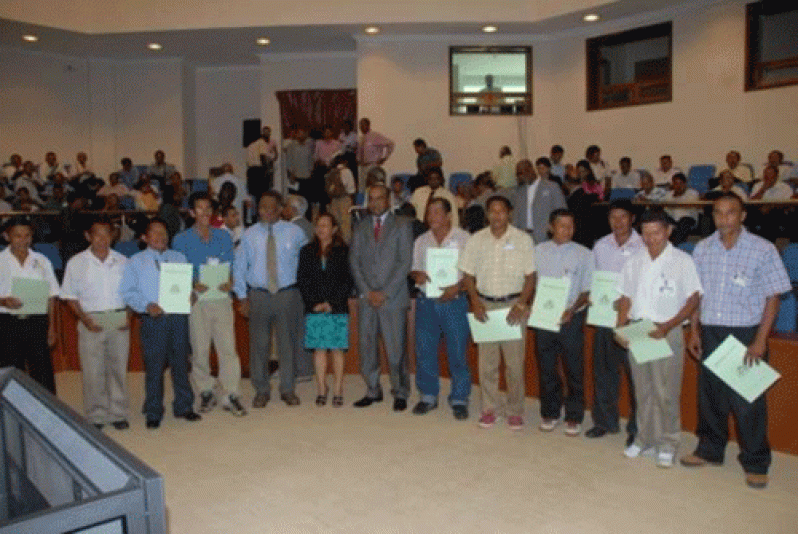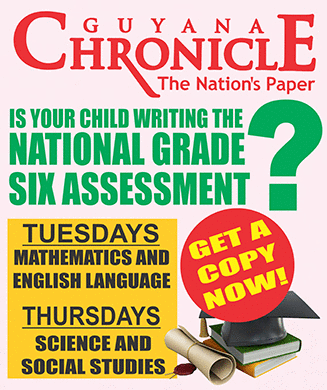THE MINISTRY of Amerindian Affairs, initiated in 2005, has a mandate to protect the rights and welfare of all Amerindians, as it has been striving to do since its establishment .  The many socio-economic Hinterland programmes consolidate the frontiers of development in all Amerindian villages.
The many socio-economic Hinterland programmes consolidate the frontiers of development in all Amerindian villages.
Realising that building the capacity of Amerindian leaders is critical to the development of Guyana’s indigenous peoples, this Administration has implemented several initiatives in this regard ,and the National Toshaos Council (NTC) has been at the centre of decision-making and participation.
The annual NTC is organised with the aim of engaging stakeholders in discussion towards capitalising and heightening development in Amerindian communities.
The sixth NTC conference, which begins today, will see the signing of an agreement between the United Nations Development Programme (UNDP) and the Government of Guyana for the Amerindian Development Fund (ADF) that will commence the execution of community development projects in Amerindian communities.
This year’s theme, “Establishing Strategic Approaches and Alliances for Sustaining Amerindian Development”, will see stakeholders and leaders from 190 villages focusing on the opt-in mechanism for the Low Carbon Development Strategy (LCDs,) villages and issues of governance, legislation, administration and resource management.
The NTC comprises Toshaos across the country, and it is the executive body that highlights the issues affecting the Amerindian people.
In 2009, when the NTC was established, members underwent numerous training sessions dealing with leadership issues and understanding the Amerindian Act. This enabled them to help each other while training in governance and mediation enhanced their leadership capacities.
Understanding the LCDS involved many training sessions which saw information being taken back to the various regions and shared with the local leaders. The members of the NTC have become very capable and well informed,with the ability to help each other.
While criticism of the LCDS will always be there, the NTC is proud of their input into the programme, according to its Chairperson Yvonne Pearson, during a recent interview with the Government Information Agency.
They are also proud that indigenous peoples have the right to say yes or no to the LCDS. They however acknowledged that work will continue to try to get people to better understand what it is all about, since there is still need to do so.
In every Amerindian village where there was no school or health centre, there is now one. While this does not mean that all is now perfect, it shows that there has been tremendous development in these two sectors, Pearson said.
Most, if not all, schools and health facilities are manned by local persons who are trained to provide these services to their communities.
In Guyana, the Constitution and the Amerindian Act state that ownership of indigenous land is absolute. All of the rights of the indigenous peoples in Guyana are fully respected, putting the country far ahead of others with regard to indigenous peoples, the NTC Chairperson said.
Amerindians have long requested that their rights to land be recognised; and under this Administration, significant progress has been made in addressing their land claims.
To date, there are more than 96 titled Amerindian villages and 77 demarcated communities, with the State bearing the cost. The Amerindian Affairs Ministry continues to pursue this exercise.
A four-year Amerindian Land Demarcation Plan has been developed in line with the LCDS which emphasizes the importance of protecting indigenous land rights and opening windows of opportunities for Amerindians, especially those who depend on forest resources as a means of livelihood.
Non-demarcation leaves an Amerindian community open for anyone to apply for state forest or mining permission and encroach on their land.
The NTC has encouraged those villages who have not considered demarcation yet to get this done, Pearson said.
On the issue of transportation, Pearson stated that assistance in this regard from government has made life a little easier for hinterland communities. At Mainstay/ Whyaka in Region 2, which is her community, she said the presidential grant enabled the purchase of a minibus for the transport of children to and from school at a minimal cost, thus boosting school attendance.
Additionally, the village purchased a tractor and trailer, along with a truck, to facilitate farmers and loggers.
Numerous villages have been assisted with transportation in one form or another, such as boats, tractors, trailers, minibuses, all terrain vehicles, and pick up vans.
Many communities have attested that they have significantly bettered their lives and their families’ lives through transportation boost.
NTC – capitalising and intensifying development in Amerindian communities
SHARE THIS ARTICLE :
Facebook
Twitter
WhatsApp



.jpg)








